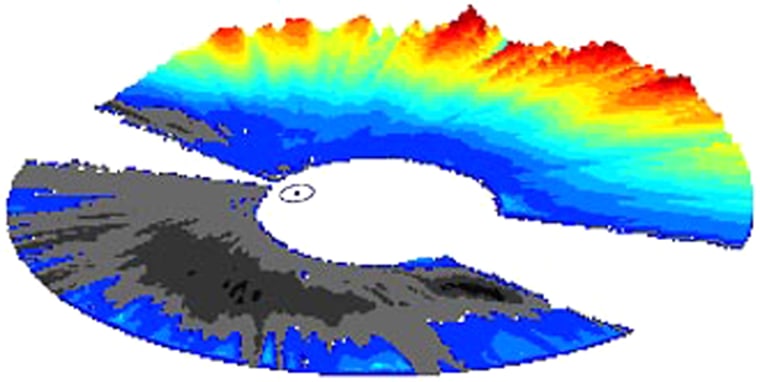A slow-motion collision between mysterious dark matter and two of the Milky Way’s galactic neighbors may be causing our galaxy to warp like a vinyl record left out in the hot sun, scientists announced Monday.
Astronomers have puzzled over the Milky Way’s warped shape for nearly half a century but have been unable to provide a convincing explanation for what might be causing it.
The warp is most clearly visible in a thin disk of hydrogen gas that extends across the entire 200,000-light-year diameter of the Milky Way.
Viewed sideways, half of the hydrogen disk appears to stick up above our galaxy’s plane of stars and gas, while the other half dips below the plane for a bit and then rises upward again farther away from the galaxy’s center.
Old theory, new twist
One early explanation was that the gravity from two neighboring dwarf galaxies known as the Magellanic Clouds was causing the Milky Way to warp as the pair moved in their 1.5-billion-year orbit around our galaxy.
This hypothesis was later dismissed after it was shown that the combined mass of the two dwarf galaxies is only about 2 percent of the Milky Way’s enormous hydrogen disk — not nearly enough to cause the warp.
Now researchers from the University of California at Berkeley have revived this old theory with a new twist.
Using computer models, the team showed that the Magellanic Clouds could warp the shape of the Milky Way, but only if they were moving through a thick halo of hypothetical dark matter.
Dark matter can’t be directly observed because it neither emits nor reflects visible light or other electromagnetic radiation. However, its presence has been inferred from the gravitational effect it has on visible matter such as stars and galaxies. Astronomers believe that dark matter may make up as much as 90 percent of the mass in the universe.

The computer model suggests that if the dwarf galaxies were moving through dark matter, then their gravitational influence would be enhanced to the point where they could cause warping similar to what has been observed.
The model also revealed another surprise.
“We often think of the warp as being static, but this simulation shows that it is very dynamic,” said Leo Blitz, an astronomer from UC Berkeley who was involved in the study.
The model indicates that as the Magellanic Clouds interact with dark matter, they create vibrations that cause the Milky Way’s hydrogen disk to oscillate. The overall effect is reminiscent of the edges of a tablecloth flapping in the wind, the researchers said.
Since many other galaxies are also warped, the researchers believe similar processes might explain their shapes as well.
The study was detailed here in a press conference at the 207th Meeting of the American Astronomical Society and will be published in an upcoming issue of the Astrophysical Journal.